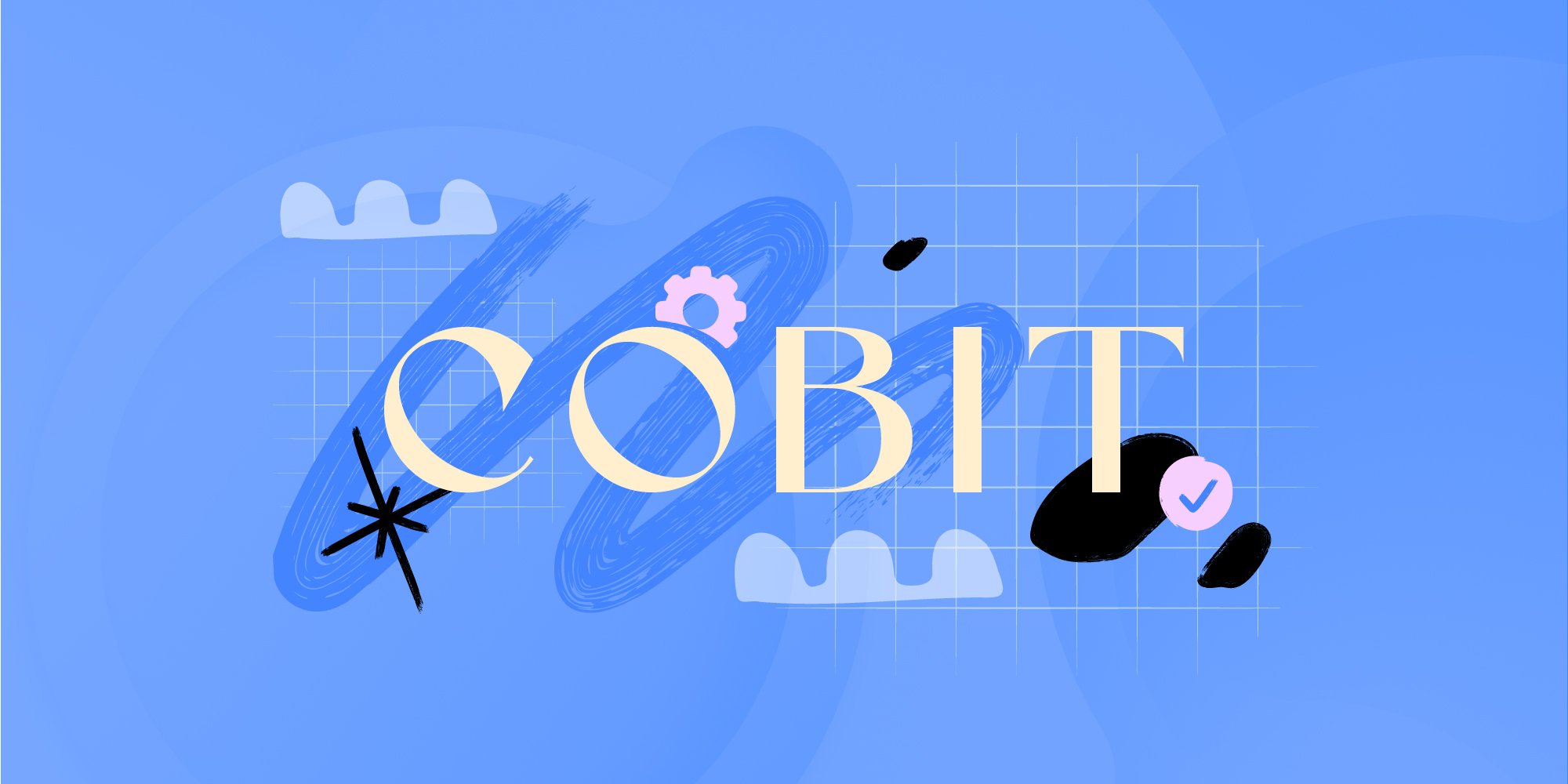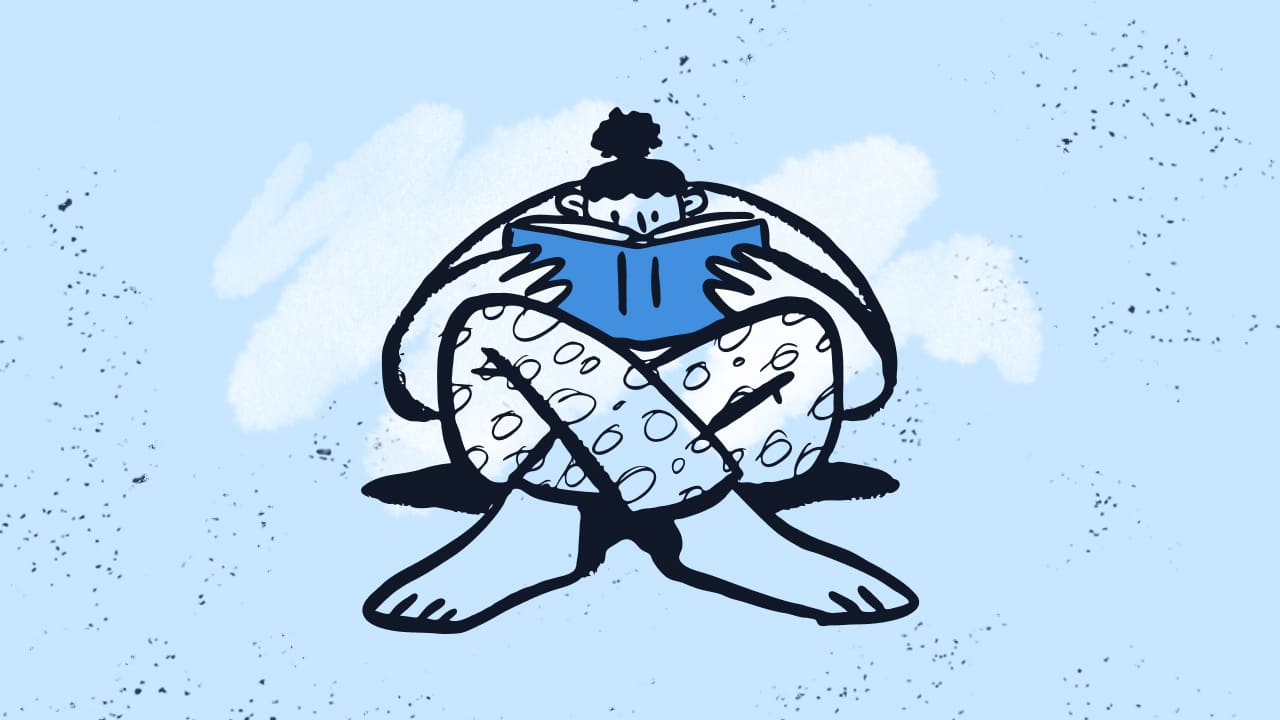In the realm of IT Service Management, two prominent frameworks stand out: COBIT and ITIL. Both have been instrumental in guiding organizations toward effective IT Governance and Service Management, yet they serve distinct purposes and methodologies.
This article delves into the intricacies of the COBIT vs ITIL discussion, highlighting their key differences and benefits to help you determine which framework aligns best with your organizational needs.
Let's go!

What is COBIT (Control Objectives for Information and Related Technologies)?
COBIT (Control Objectives for Information and Related Technologies) is a framework developed by ISACA for the governance and management of enterprise IT. COBIT helps organizations create optimal value from IT by maintaining a balance between realizing benefits and optimizing risk levels and resource use.
Although COBIT is used by any company that requires a solid structure for IT governance and management, it is particularly well-suited for organizations that need to meet stringent regulatory and compliance requirements.
COBIT definition
COBIT is a comprehensive framework for managing and governing enterprise IT environments. It provides globally accepted principles, practices, analytical tools, and models to help organizations increase the trust and value of their IT. COBIT is designed to align IT goals with business goals and to ensure effective control and governance over IT.
Characteristics of COBIT
Thanks to its comprehensive approach, adaptability, and compatibility with other frameworks, COBIT is an effective tool to ensure that technology supports and enhances the organization’s objectives.
To address the complexities of the IT environment, the framework divides IT governance from IT management, although both must be aligned: the former focuses on strategic direction and oversight; the latter on planning, building, executing, and monitoring technological tasks.
One of the essential components of the framework is the Goals Cascade, a mechanism that translates stakeholder needs into organizational goals, and then into IT objectives, thus ensuring that technological resources are in harmony with business resources.
As guides for organizations, COBIT deploys a series of principles, policies, and frameworks that help define structures; processes, with specific tasks and practices; organization and responsibilities of each person; culture, ethics, and behavior, which influence how activities are carried out; information, necessary to make effective decisions; services, infrastructure, and applications, technologies used to enable IT; and people, skills, and competencies to complete the tasks.
COBIT encompasses the following stages:
- Evaluate, Direct, and Monitor: focuses on governance activities.
- Align, Plan, and Organize: of IT services.
- Build, Acquire, and Implement: development and application of technological solutions.
- Deliver, Service, and Support: of services.
- Monitor, Evaluate, and Assess: of IT performance.

Objectives of COBIT
The central objective of COBIT is to provide guidelines for IT governance and management to ensure that IT resources are aligned with the business's strategic objectives.
Specifically, these are the goals of the framework:
- Ensure that technology is in line with business objectives: the framework ensures that IT tools support the organization's strategic direction.
- Manage and mitigate IT-related risks: it helps protect assets against internal and external threats to safeguard business continuity.
- Optimize resources and investments in technology: to maximize efficiency and effectiveness in service delivery.
- Ensure compliance with relevant laws, regulations, and policies: it must also be demonstrated that Compliance Management is performed through audits and controls.
History of COBIT
Created by ISACA in 1996 to support IT Governance and Management, COBIT has evolved through several versions, incorporating feedback from industry professionals and adapting to the changing technological landscape.
In response to the need for a framework that provides control objectives for technology management, the first version focused on establishing records to audit and manage information systems.
The latest version, COBIT 2019, introduced updated governance and management objectives, adapted to modern businesses and technologies. Designed to be more flexible and adaptable, it allows for greater customization. It also incorporated design guides, in addition to enhancing principles and practices to more effectively address digital transformation, cybersecurity, and other emerging challenges.
It is worth noting that COBIT continues to evolve to respond to ever-changing environments. In fact, ISACA continues to develop support materials, guides, and tools to help organizations implement and optimize the framework.

What is ITIL?
ITIL (former know as Information Technology Infrastructure Library) is a set of detailed practices for IT Service Management that focuses on aligning IT services with the needs of the business.
ITIL provides a cohesive set of best practices, drawn from the public and private sectors internationally. It has evolved to address the changing landscape of IT services, offering guidance that is applicable to all types of organizations.
Characteristics of ITIL
To drive efficiency, quality, and continuous improvement in service delivery, ITIL was conceived as a robust yet flexible ITSM framework, with a clear focus on the service lifecycle, customer orientation, process standardization, Knowledge Management, and Risk Management.
One of the key elements of the framework is the service lifecycle, which includes various stages such as strategy, design, transition, operation, and continuous optimization.
In the context of the framework, the customer plays a fundamental role that involves understanding and meeting their requirements, adapting services, and promoting their quality. It also includes managing relationships with users, with specific processes that involve pre-agreed service levels.
To promote continuous improvement, ITIL defines a set of standardized processes that cover all aspects of IT Service Management, from Incident Management and Problem Management to Change Management and Knowledge Management.
These processes promote consistency and efficiency in service delivery, which helps reduce costs, enhance service quality, and optimize market positioning.
ITIL technical definition
ITIL is an ITSM framework designed to standardize the selection, planning, delivery, maintenance, and overall lifecycle of IT services within a business. The goal is to improve efficiency and achieve predictable service levels.
ITIL enables organizations to deliver appropriate services and continually enhance them, ensuring they meet the needs of both the business and its customers.

ITIL history
Initially known as the Information Technology Infrastructure Library, ITIL was developed by the Central Computer and Telecommunications Agency (CCTA) in the UK during the 1980s.
It was designed to create a cohesive set of standards for IT Management. Over time, ITIL has undergone several revisions, with the most current version being ITIL 4, which integrates modern concepts such as Agile, DevOps, and lean practices to address contemporary IT Service Management needs.
ITIL objectives
The primary objectives of ITIL are to:
-
Enhance the alignment of IT services with business needs.
-
Improve service delivery and customer satisfaction.
-
Reduce costs through improved use of resources.
-
Provide a standard framework for IT Service Management practices.
ITIL vs COBIT: 7 key differences
1) Focus and scope
ITIL focuses primarily on IT Service Management and provides a detailed process model for managing the entire lifecycle of IT services. It emphasizes continuous service improvement and customer satisfaction, making it highly practical for organizations aiming to enhance their IT service delivery.
COBIT, on the other hand, is broader in scope and addresses IT Governance as a whole. It is designed to ensure that IT processes are aligned with business objectives and that they meet regulatory requirements. COBIT's comprehensive approach makes it ideal for organizations that need to establish a robust IT Governance framework.
2) Implementation and usage
ITIL is often implemented by IT Service Management teams to improve the quality and efficiency of IT services. It provides detailed guidance on service design, transition, operation, and continual improvement, making it a valuable tool for IT departments focused on service excellence.
COBIT is typically used by senior management and IT Governance teams to ensure that IT investments are delivering value and that risks are managed effectively. It provides a high-level framework that integrates with other standards and practices, such as ISO/IEC 38500, making it a versatile tool for comprehensive IT Governance.
3) Approach to process improvement
ITIL focuses on continuous service improvement by monitoring and optimizing IT service processes to enhance performance and customer satisfaction. It encourages ongoing refinement of services to meet changing business needs and improve overall service quality.
COBIT emphasizes continuous improvement in IT Governance, ensuring that IT processes are aligned with evolving business goals and regulatory requirements. It provides a systematic approach to enhancing governance practices and achieving better control over IT activities.

4) Audience and users
ITIL is primarily used by IT Service Management teams, operational staff, and service managers focused on delivering high-quality IT services. It provides practical guidance for day-to-day IT operations and service delivery.
COBIT is utilized by senior management, IT Governance professionals, and auditors concerned with aligning IT strategy with business strategy and ensuring regulatory compliance. It offers a strategic view of IT Governance and risk management.
5) Framework structure
ITIL is organized around the IT service lifecycle, including service strategy, service design, service transition, service operation, and continual service improvement. Each stage provides specific guidance and best practices for managing IT services effectively.
COBIT is structured around governance and management objectives, with a focus on five key domains: Evaluate, Direct and Monitor (EDM); Align, Plan and Organize (APO); Build, Acquire and Implement (BAI); Deliver, Service and Support (DSS); and Monitor, Evaluate and Assess (MEA). This structure ensures a comprehensive approach to IT Governance and management.
6) Focus on business objectives and value
ITIL concentrates on delivering value to customers through efficient and effective IT services, directly impacting service delivery and customer satisfaction. It aims to align IT services with business needs to achieve maximum value.
COBIT focuses on optimizing the value of IT investments and ensuring that IT supports business goals, often addressing risk management and compliance. It provides a framework for aligning IT with business strategies to achieve optimal results.
7) Certification and training
ITIL offers a well-established certification path, including ITIL Foundation, Practitioner, Intermediate, Expert, and Master levels, aimed at building expertise in IT Service Management. These certifications are widely recognized and valued in the IT industry.
COBIT provides certification options such as COBIT Foundation, COBIT 5 Implementation, and COBIT 5 Assessor, focusing on IT Governance and management principles. These certifications help professionals demonstrate their knowledge and skills in IT Governance.

COBIT vs ITIL: Can they coexist?
Many organizations often wonder whether COBIT and ITIL can coexist within their IT management practices. The answer is a resounding yes! While each framework has its unique strengths and focuses, they can complement one another to create a more robust governance and service management strategy.
For instance, an organization might leverage ITIL to enhance service delivery and customer satisfaction while simultaneously employing COBIT to ensure that IT initiatives align with business objectives and regulatory requirements.
This dual approach allows organizations to benefit from the detailed, process-oriented methodologies of ITIL while maintaining a high-level view of governance and risk management through COBIT.
Additionally, using both frameworks can help organizations bridge the gap between operational and strategic perspectives. ITIL provides the tactical guidance needed for effective IT Service Management, while COBIT ensures that those services are delivering value and supporting broader business goals.
When implemented together, they create a harmonious relationship that promotes continuous improvement and operational excellence.
In conclusion, embracing both COBIT and ITIL can provide organizations with the necessary tools to navigate the complexities of IT Governance and service management effectively. By recognizing the unique contributions of each framework, organizations can tailor their approach to fit their specific needs and goals.

COBIT vs ITIL: Which one to pick?
Choosing between COBIT and ITIL largely depends on your organization's specific needs and objectives. If your primary focus is on enhancing IT service delivery and aligning IT services with customer requirements, ITIL is likely the better fit.
ITIL's comprehensive framework provides detailed guidance on managing the lifecycle of IT services, which is essential for organizations looking to improve their IT Service Management capabilities.
On the other hand, if your organization prioritizes governance, risk management, and regulatory compliance, COBIT may be the more appropriate choice. COBIT offers a broad perspective on IT Governance, ensuring that IT initiatives align with business objectives and that risks are effectively managed.
This makes COBIT particularly valuable for organizations operating in highly regulated industries or those with complex IT environments.
Ultimately, organizations should consider their current challenges, goals, and existing processes when deciding between COBIT and ITIL. It may also be beneficial to evaluate the possibility of integrating both frameworks to leverage the strengths of each.
By carefully assessing your organization's unique context, you can make an informed decision that sets the stage for effective IT Governance and service management.
Final thoughts
COBIT vs ITIL is a discussion we revisit from time to time. Choosing between ITIL and COBIT depends on your organization's specific needs and goals. If your primary focus is on improving IT Service Management and customer satisfaction, ITIL is likely the better choice. However, if you need a comprehensive IT Governance framework that aligns IT with business objectives and ensures compliance, COBIT might be more suitable.
Both frameworks offer valuable guidance and can complement each other to create a robust IT management strategy.
Frequently Asked Questions (FAQs)
1. What are the main differences between ITIL and COBIT?
ITIL focuses on IT Service Management and continuous improvement, while COBIT addresses overall IT Governance, including risk management and compliance.
2. Can ITIL and COBIT be used together?
Yes, many organizations use both frameworks together to benefit from ITIL's detailed service management processes and COBIT's comprehensive governance structure.
3. Which framework is better for regulatory compliance?
COBIT is generally better suited for regulatory compliance due to its emphasis on governance and risk management.
4. Is ITIL suitable for all types of organizations?
Yes, ITIL is versatile and can be adapted to suit organizations of all sizes and across various industries.















